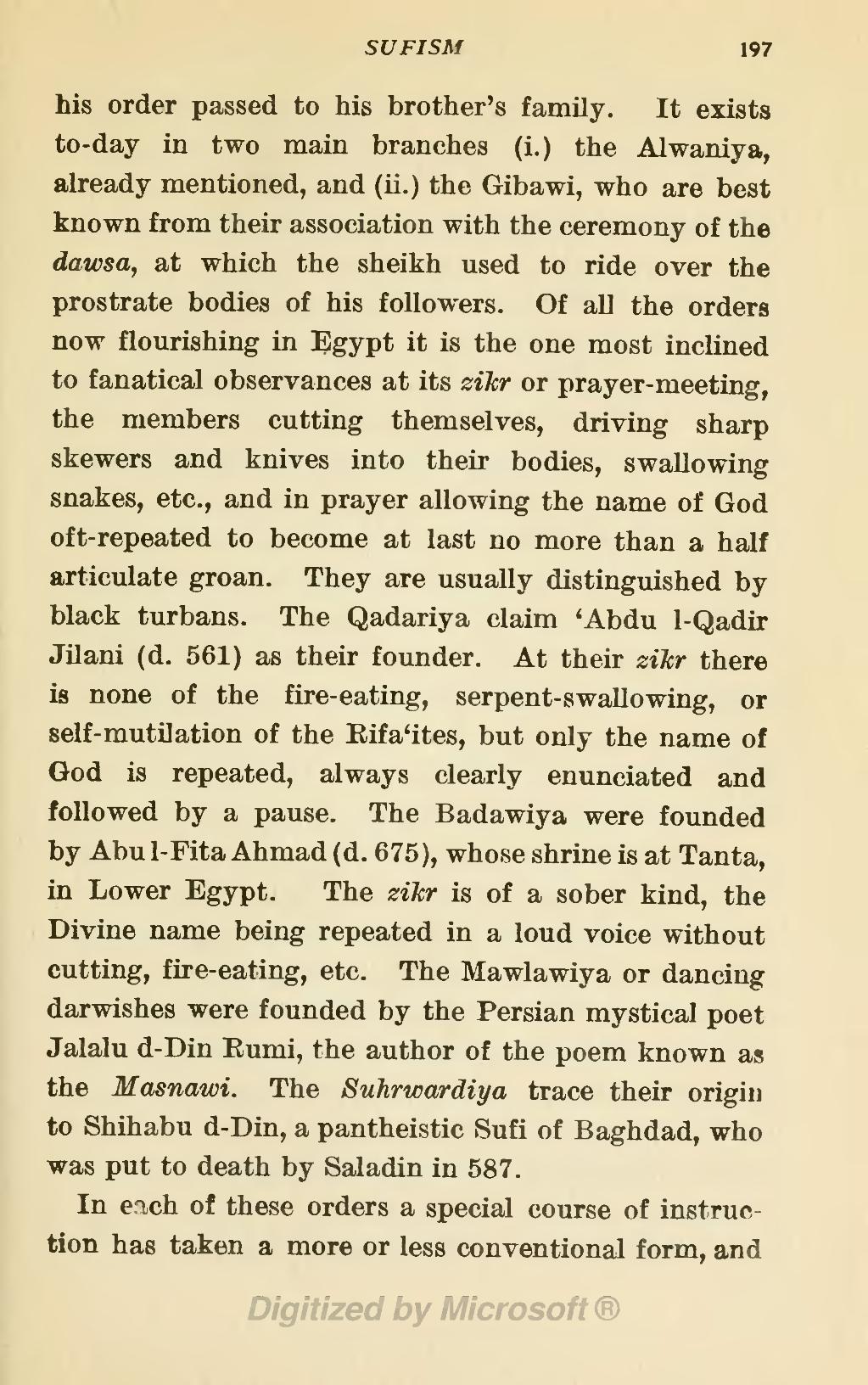his order passed to his brother's family. It exists to-day in two main branches (i.) the Alwaniya, already mentioned, and (ii.) the Gibawi, who are best known from their association with the ceremony of the dawsa, at which the sheikh used to ride over the prostrate bodies of his followers. Of all the orders now flourishing in Egypt it is the one most inclined to fanatical observances at its zikr or prayer-meeting, the members cutting themselves, driving sharp skewers and knives into their bodies, swallowing snakes, etc., and in prayer allowing the name of God oft-repeated to become at last no more than a half articulate groan. They are usually distinguished by black turbans. The Qadariya claim 'Abdu l-Qadir Jilani (d. 561) as their founder. At their zikr there is none of the fire-eating, serpent-swallowing, or self-mutilation of the Rifa'ites, but only the name of God is repeated, always clearly enunciated and followed by a pause. The Badawiya were founded by Abu l-Fita Ahmad (d. 675), whose shrine is at Tanta, in Lower Egypt. The zikr is of a sober kind, the Divine name being repeated in a loud voice without cutting, fire-eating, etc. The Mawlawiya or dancing darwishes were founded by the Persian mystical poet Jalalu d-Din Rumi, the author of the poem known as the Masnawi. The Suhrwardiya trace their origin to Shihabu d-Din, a pantheistic Sufi of Baghdad, who was put to death by Saladin in 587.
In each of these orders a special course of instruction has taken a more or less conventional form, and
